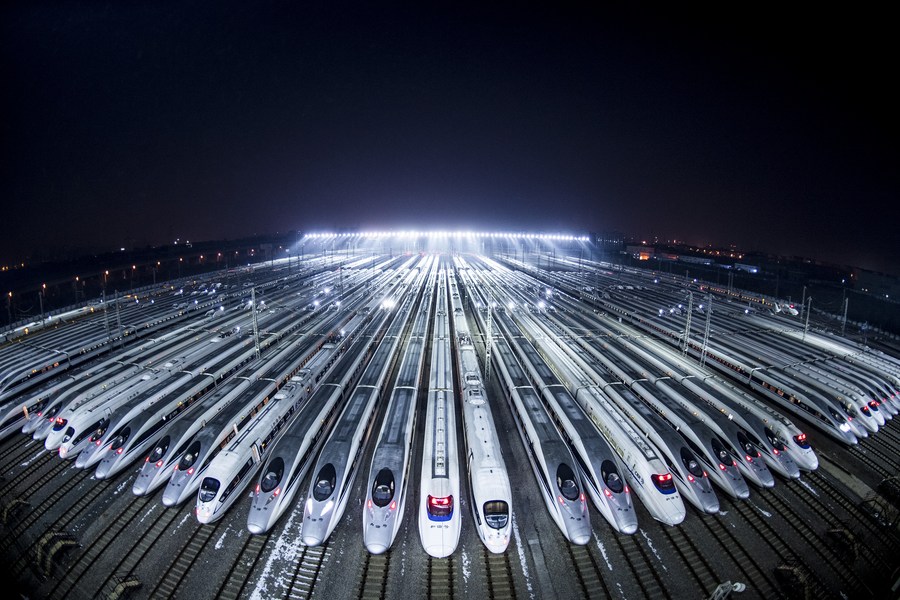
Photo taken on Feb. 1, 2018 shows bullet trains waiting to be maintained in Wuhan, central China's Hubei Province. (Xinhua/Xiao Yijiu)
BEIJING, Jan. 24 (Xinhua) -- China's railway operation mileage reached 146,300 km by the end of last year, with 37,900 km of high-speed railways, data from China State Railway Group Co., Ltd. showed.
The expanding high-speed rail network is offering unprecedented convenience and comfort to travelers and boosting local development as well.
Chinese companies have developed world-leading capabilities in building high-speed railways in extreme natural conditions. High-speed railway routes across China have been designed to suit its varying climate and geographical conditions.
The Harbin-Dalian high-speed railway travels through areas where the temperature drops to as low as 40 degree Celsius below zero in winter, the Lanzhou-Xinjiang railway passes through the savage Gobi Desert and the Hainan Island railway can withstand a battering from typhoons.
But for some travelers, the most intriguing part on the railways is that they can go through some of China's best scenic tourist destinations. The train journeys provide not only beautiful sceneries at terminus cities but also charming views outside the trains' windows on the way.
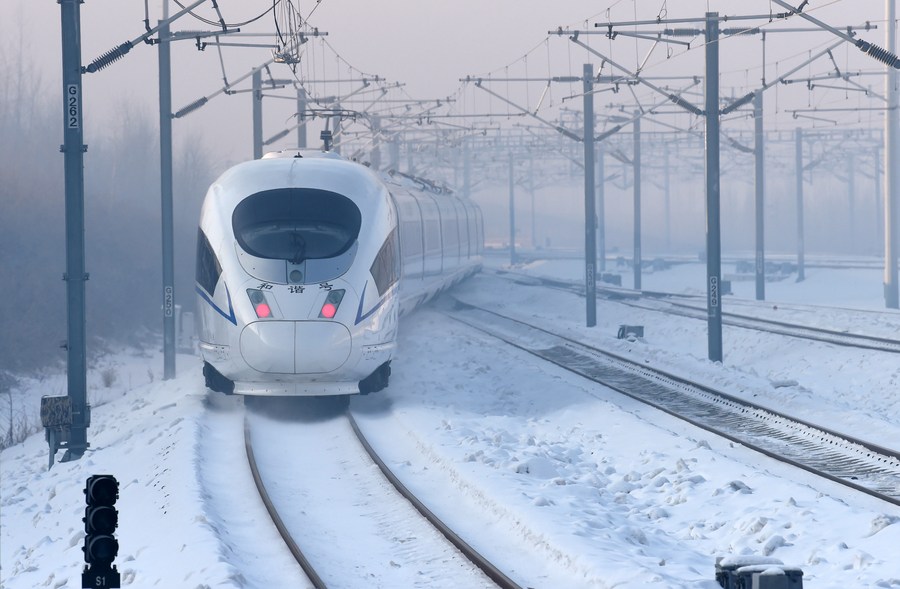
Train No. G902 from Harbin in northeast China's Heilongjiang Province to Beijing, capital of China, pulls out of the Harbin west railway station in Harbin, Jan. 22, 2021. China launched a new high-speed railway service on Jan. 22, 2021 that connects Beijing with Harbin, capital of the northeastern province of Heilongjiang. (Xinhua/Wang Jianwei)
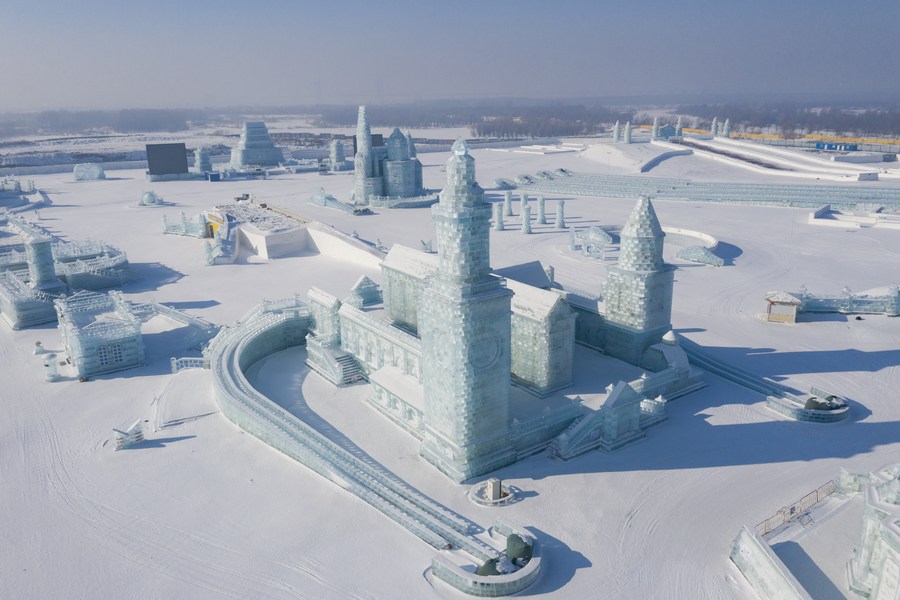
Aerial photo taken on Jan. 22, 2021 shows a view of the Harbin Ice-Snow World in Harbin, northeast China's Heilongjiang Province. (Xinhua/Xie Jianfei)
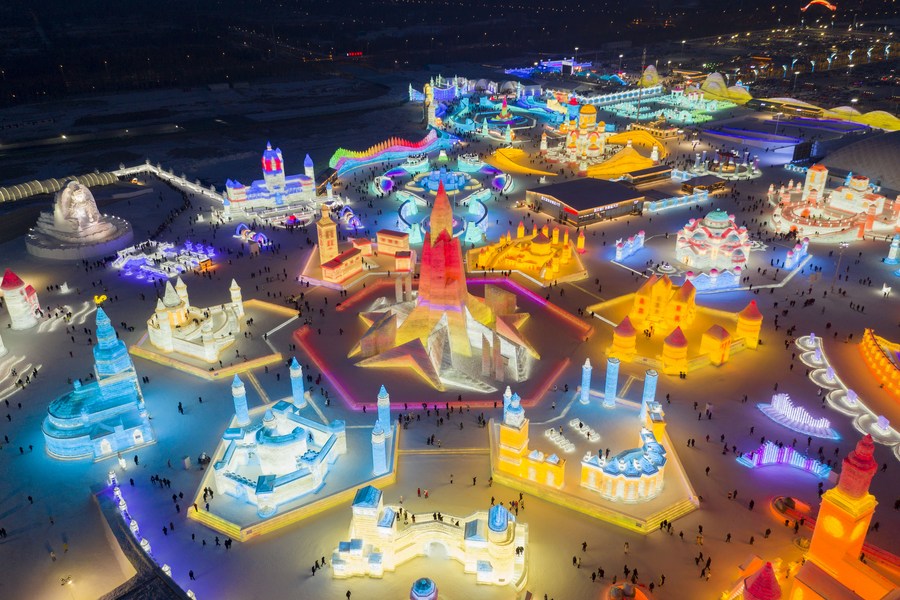
Areial photo taken on Jan. 1, 2021 shows tourists visiting the Harbin Ice-Snow World in Harbin, northeast China's Heilongjiang Province. (Xinhua/Xie Jianfei)

Tourists take selfies at the Harbin Ice-Snow World in Harbin, northeast China's Heilongjiang Province, Dec. 24, 2020. (Xinhua/Xie Jianfei)
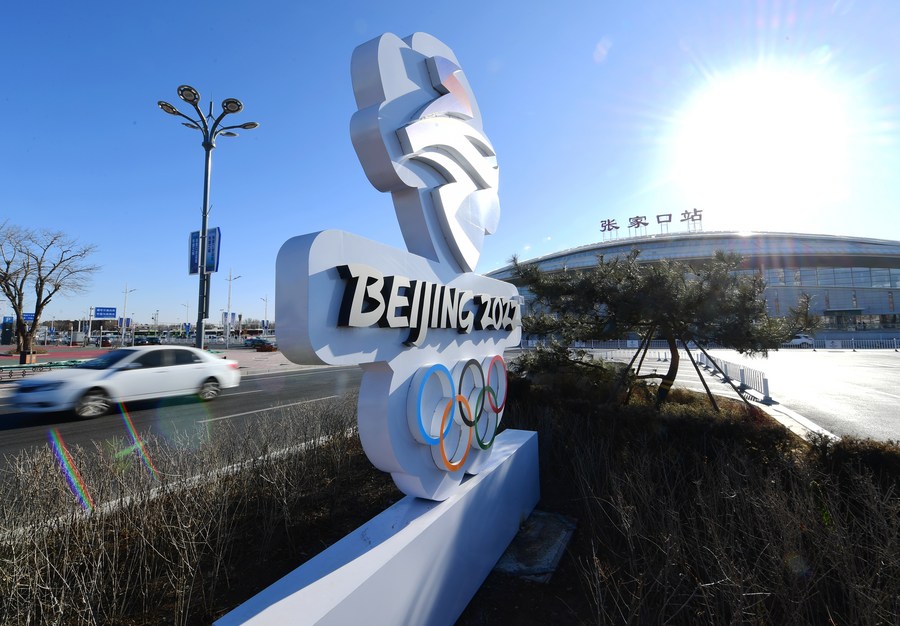
Photo taken on Dec. 30, 2020 shows the view of Zhangjiakou Railway Station in Zhangjiakou, north China's Hebei province. The Beijing-Zhangjiakou high-speed railway line has received more than 6.8 million passengers since it was put into service a year ago. (Xinhua/Zhang Chenlin)
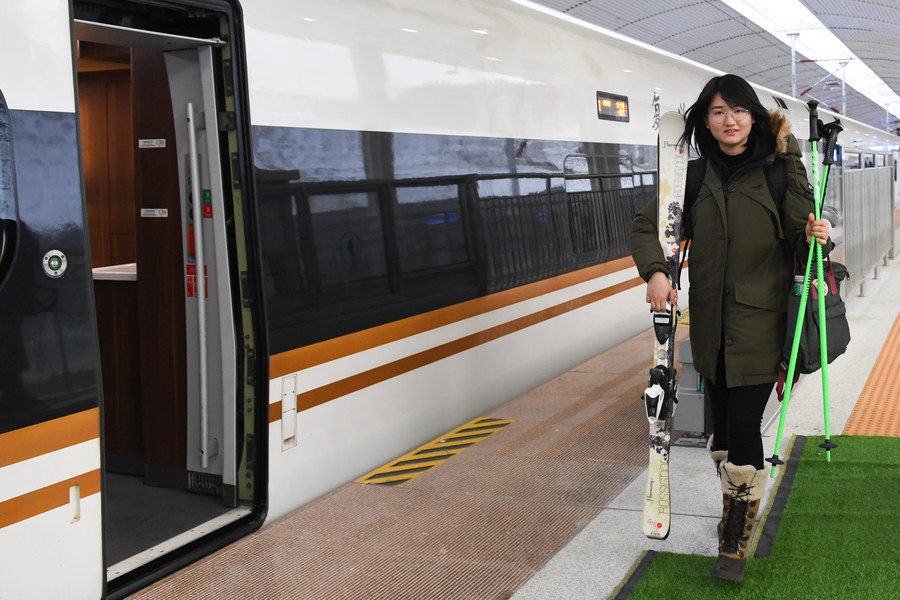
Xiao Zhen holding ski boards and poles arrives at Taizicheng station on Beijing-Zhangjiakou high-speed railway line in Chongli district of Zhangjiakou city, north China's Hebei Province, Jan. 11, 2020. (Xinhua/Ju Huanzong)

Xiao Zhen holding ski boards and poles is seen at a ski field in Chongli district of Zhangjiakou city, north China's Hebei Province, Jan. 12, 2020. (Xinhua/Ju Huanzong)
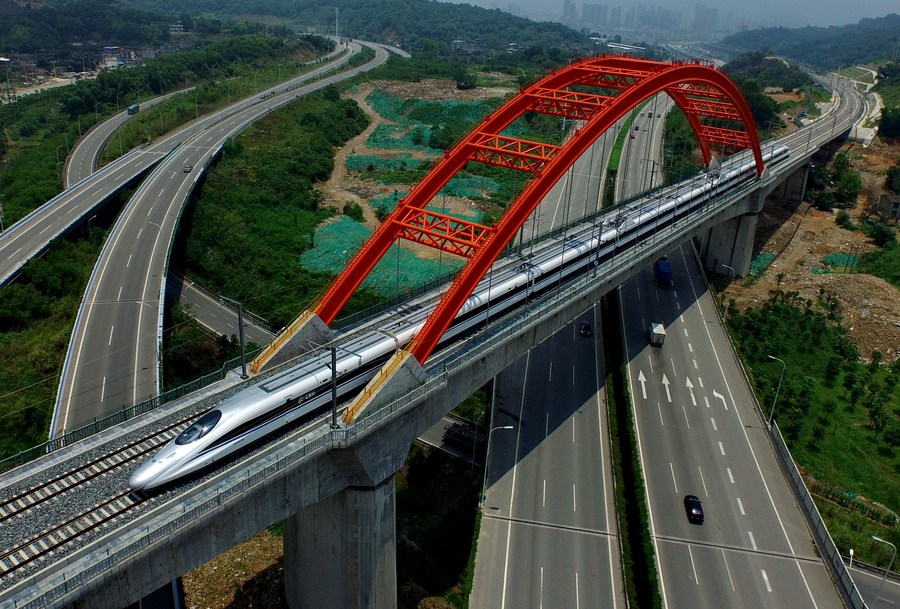
A CRH train runs on the Hefei-Fuzhou railway line in Fuzhou, capital of southeast China's Fujian Province, June 1, 2015. The 852-kilometer-long railway line connecting Hefei and Fuzhou was put into use in 2015. (Xinhua/Zhang Guojun)
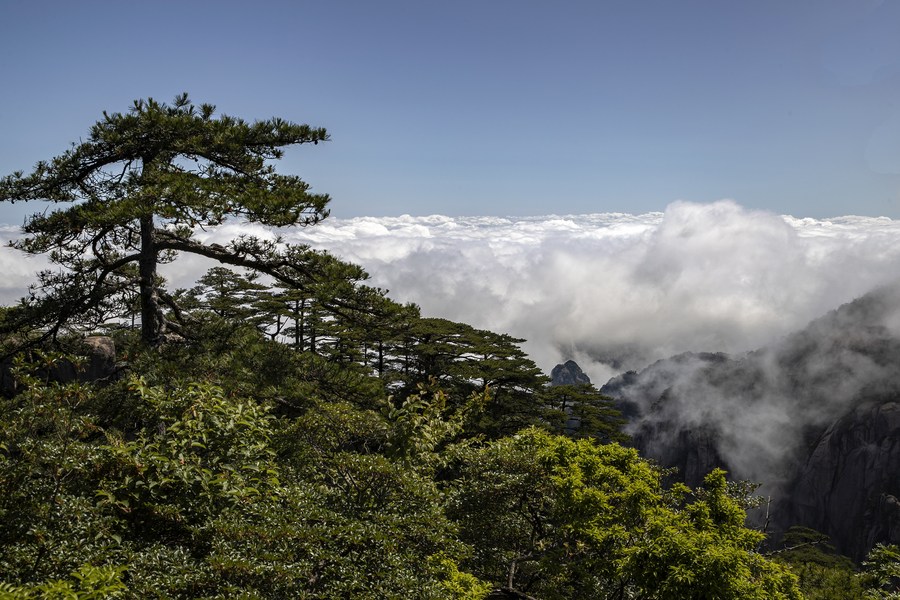
Photo taken on June 14, 2018 shows the clouds seen after rain on the Huangshan Mountain in east China's Anhui Province. (Xinhua/Shui Congze)
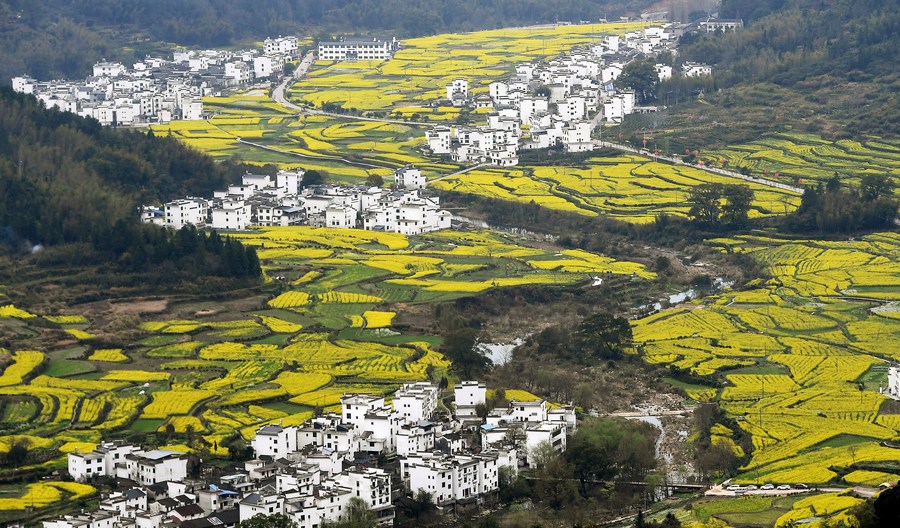
Photo taken on March 16, 2020 shows the cole flower fields in the Jiangling scenic area of Wuyuan County, east China's Jiangxi Province. (Xinhua/Wan Xiang)
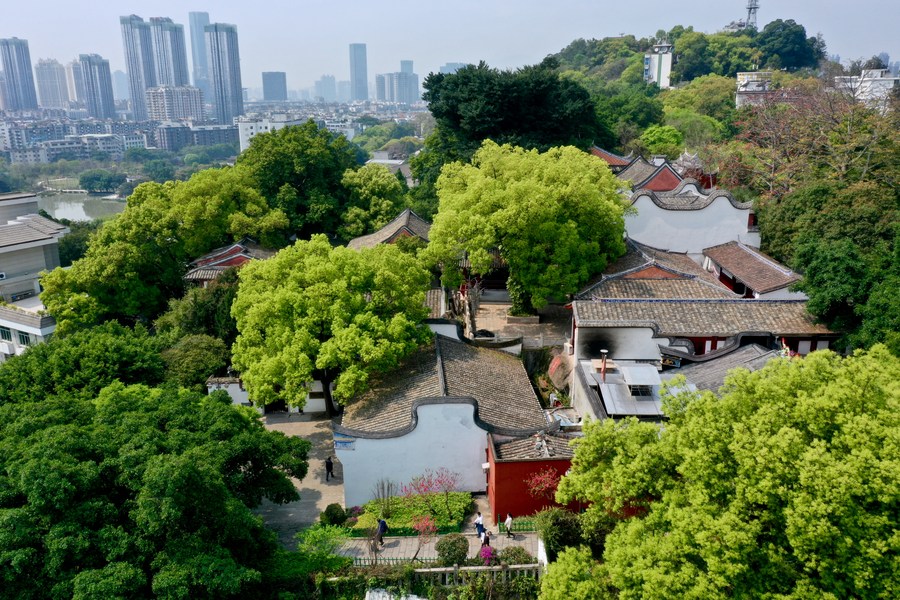
Aerial photo taken on March 22, 2020 shows the spring scenery of Wushan scenic spot in Fuzhou, capital of southeast China's Fujian Province. (Xinhua/Jiang Kehong)
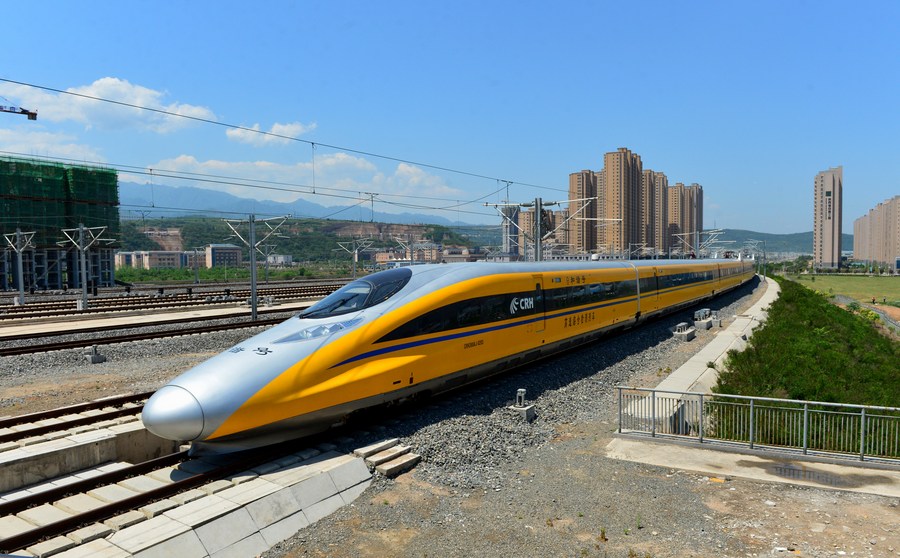
A test highspeed train runs on the Baoji-Lanzhou highspeed railway in Baoji, northwest China's Shaanxi Province, May 16, 2017. The high-speed railway linking Baoji, a city in northwest China's Shaanxi Province, and Lanzhou, the capital of northwest China's Gansu Province, opened on July 9, 2017. (Xinhua/Tang Zhenjiang)
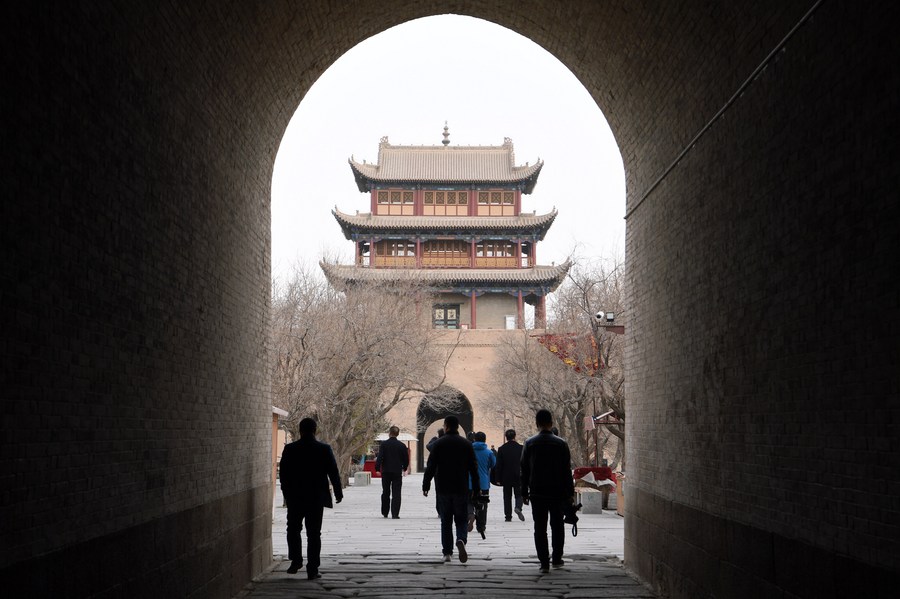
Tourists visit Jiayu Pass in Jiayuguan City, northwest China's Gansu Province, Feb. 15, 2017. Located in the convergence zone of the Loess Plateau, the Mongolian Plateau and the Qinghai-Tibet Plateau, Gansu Province in northwest China strides across various landforms including grasslands, forests, deserts, wetlands and mountains. (Xinhua/Fan Peishen)
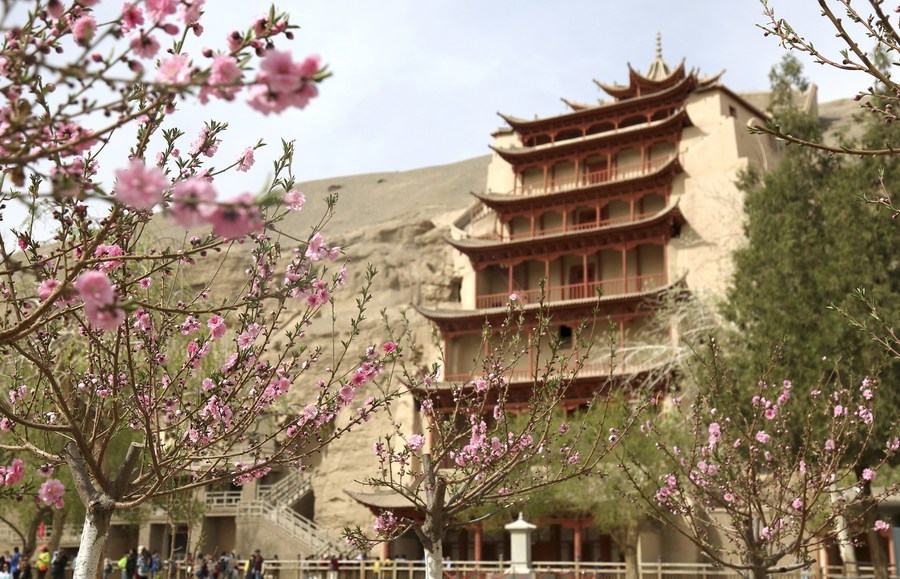
People visit the Mogao Grottoes, a world cultural heritage site, in Dunhuang, northwest China's Gansu Province, April 18, 2019. (Xinhua/Zhang Xiaoliang)
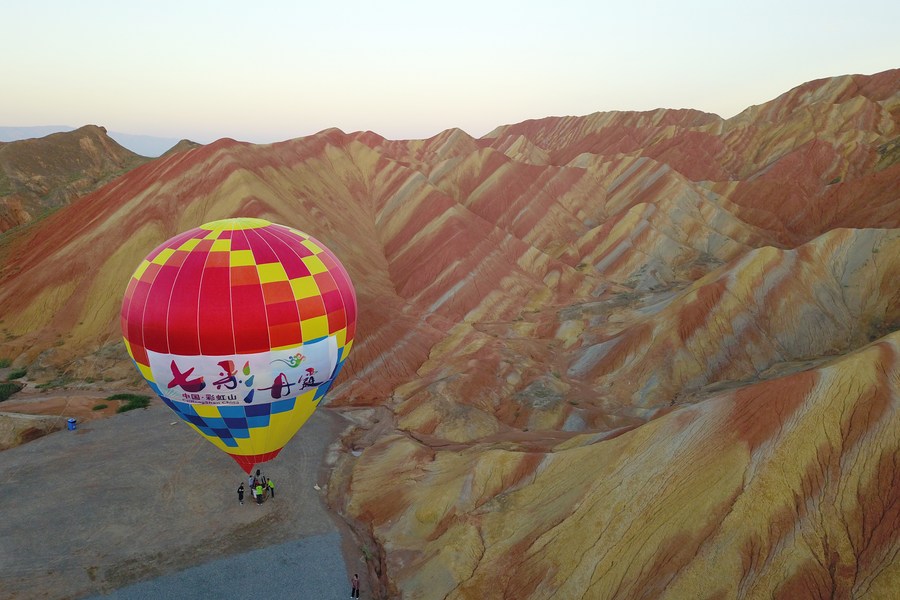
Aerial photo taken on July 26, 2020 shows a hot air balloon flying over Zhangye Geopark in Zhangye, northwest China's Gansu Province. The geological park was approved as a Global Geopark by the Executive Board of the United Nations Educational, Scientific and Cultural Organization (UNESCO) at its 209th session on July 7, 2020. (Xinhua/Fan Peishen)
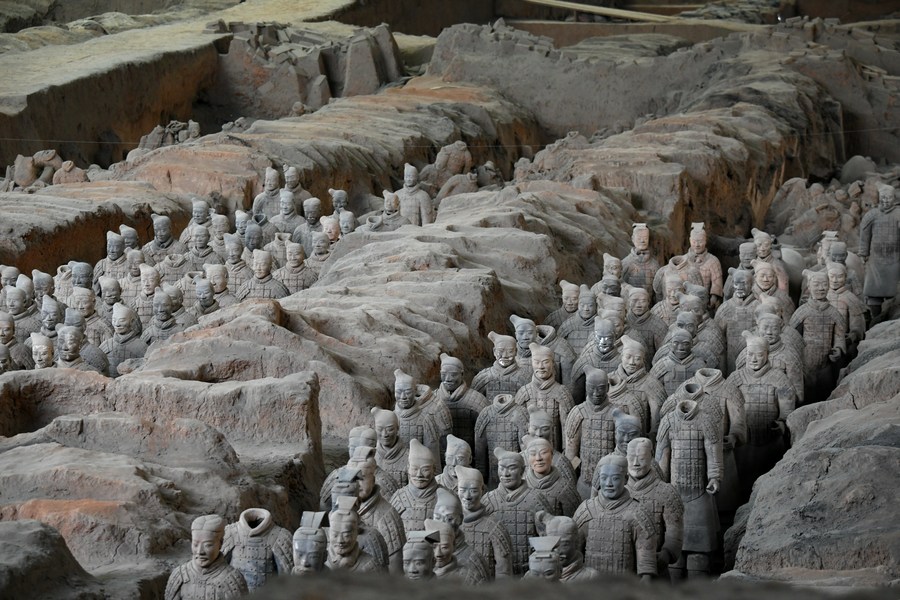
Photo taken on Dec. 5, 2019 shows terracotta warriors at Emperor Qinshihuang's Mausoleum Site Museum in Xi'an, capital of northwest China's Shaanxi Province. The Emperor Qinshihuang Mausoleum and Terracotta Warriors were included in the World Heritage list by UNESCO in 1987. (Xinhua/Li Yibo)

Photo taken on Nov. 25, 2012 shows a bullet train running through the Huanghe Bridge on Zhengzhou section of the Beijing-Guangzhou high-speed railway in central China's Henan Province. (Xinhua/Zhu Qing)
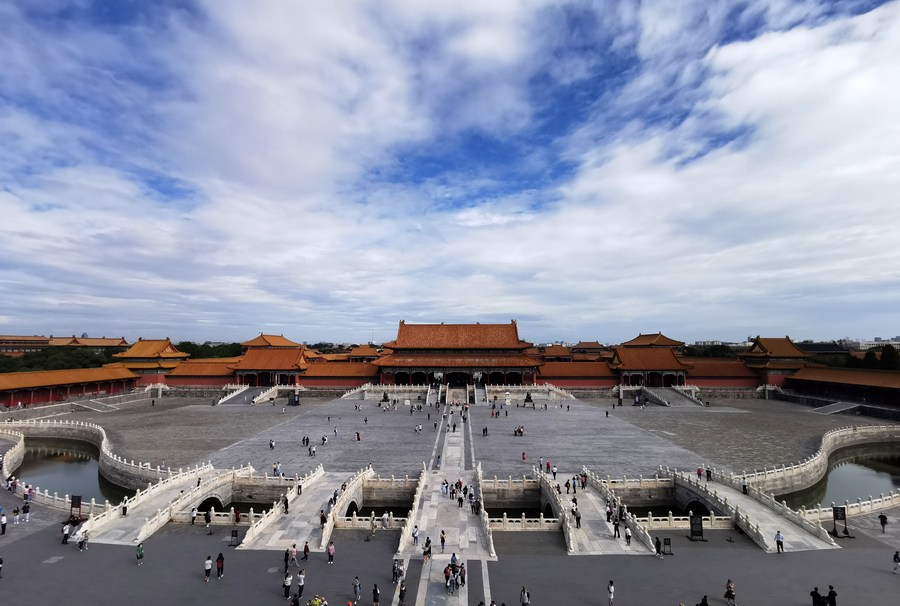
Photo taken on Sept. 10, 2020 shows a view of the Palace Museum in Beijing, capital of China. (Xinhua/Jin Liangkuai)
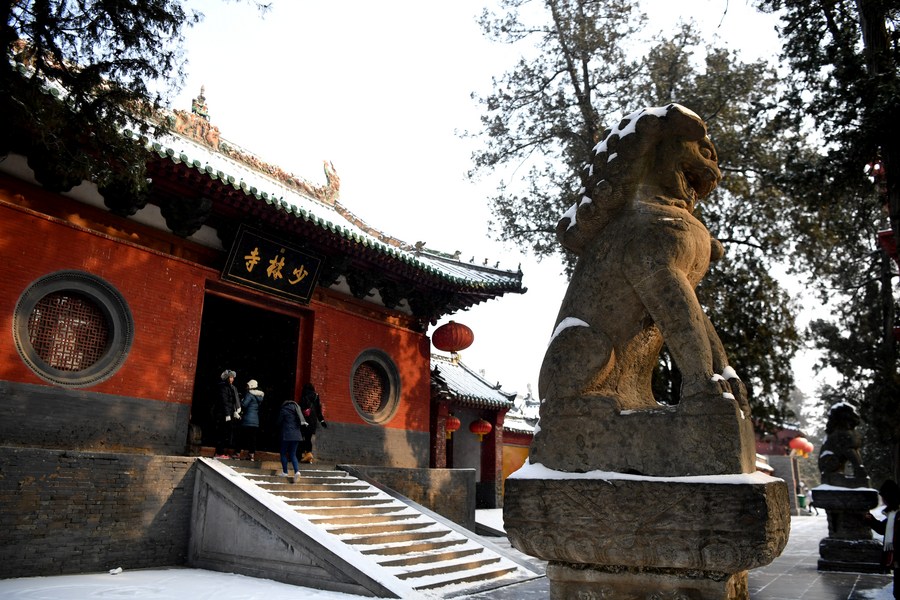
People visit Shaolin Temple after a snowfall in Dengfeng City, central China's Henan Province, Jan. 10, 2019. (Xinhua/Zhu Xiang)
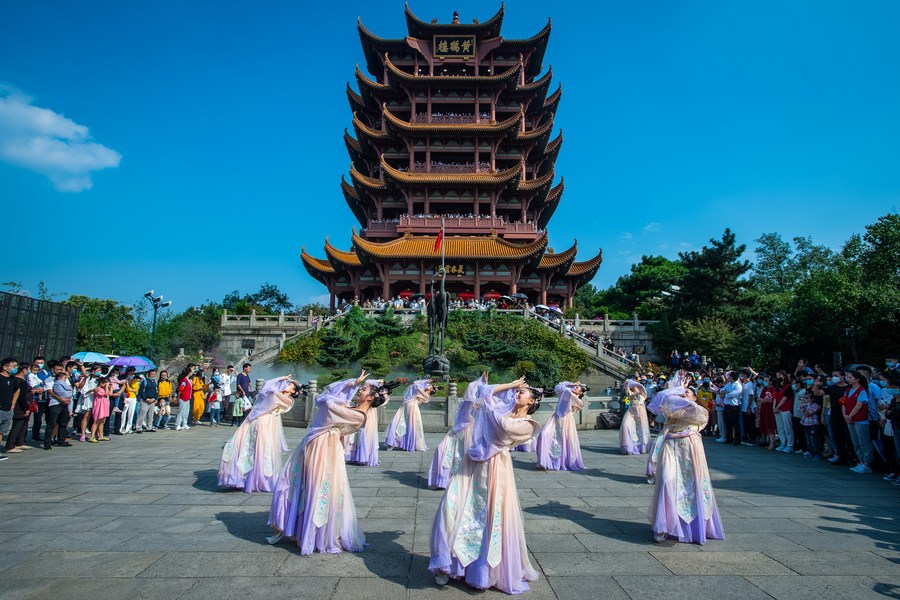
Tourists watch a performance at the Yellow Crane Tower in Wuhan, central China's Hubei Province, Oct. 1, 2020. (Xinhua/Xiao Yijiu)
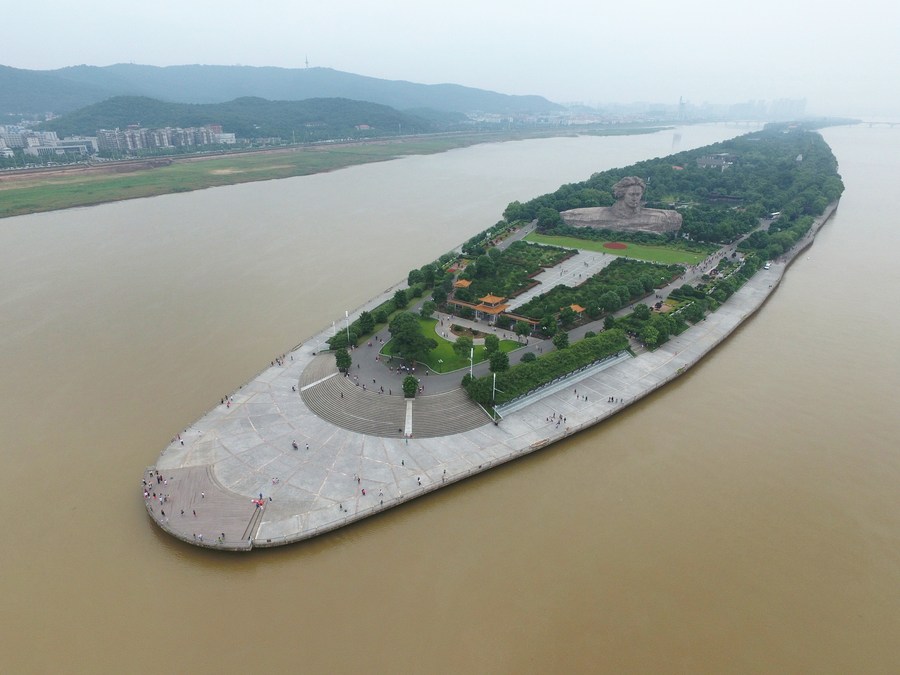
An aerial photo taken on May 18, 2016 shows the Juzizhou (Orange Islet) Islet in Changsha, capital of central China's Hunan Province. The Juzizhou Islet is a landmark scenic spot of Changsha. (Xinhua/Long Hongtao)
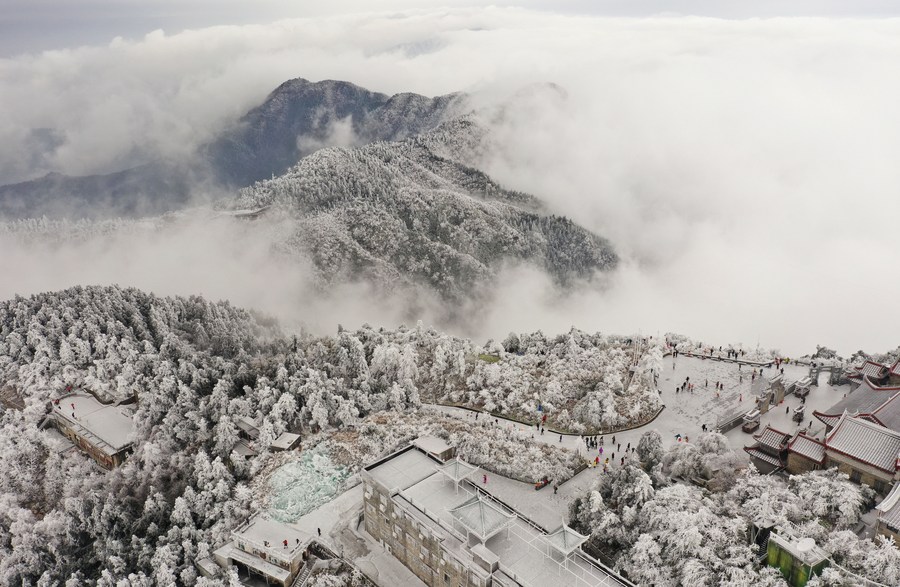
Aerial photo shows people having fun at the snow-covered Hengshan Mountain scenic area in Hengyang, central China's Hunan Province, Dec. 15, 2020. (Photo by Cao Zhengping/Xinhua)
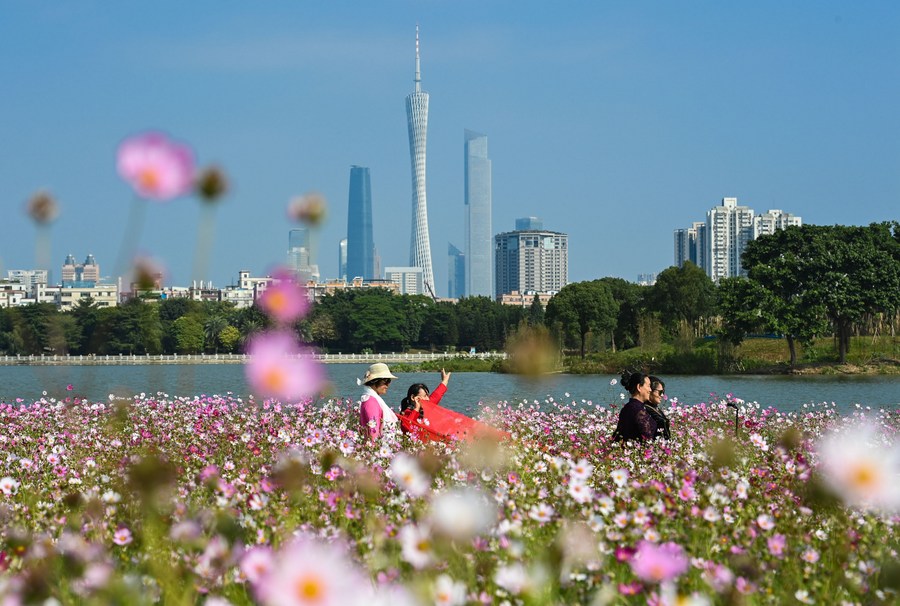
Tourists pose for photos amid cosmos flowers at Haizhu Wetland Park in Guangzhou, capital of south China's Guangdong Province, Nov. 3, 2020. (Xinhua/Liu Dawei)■




